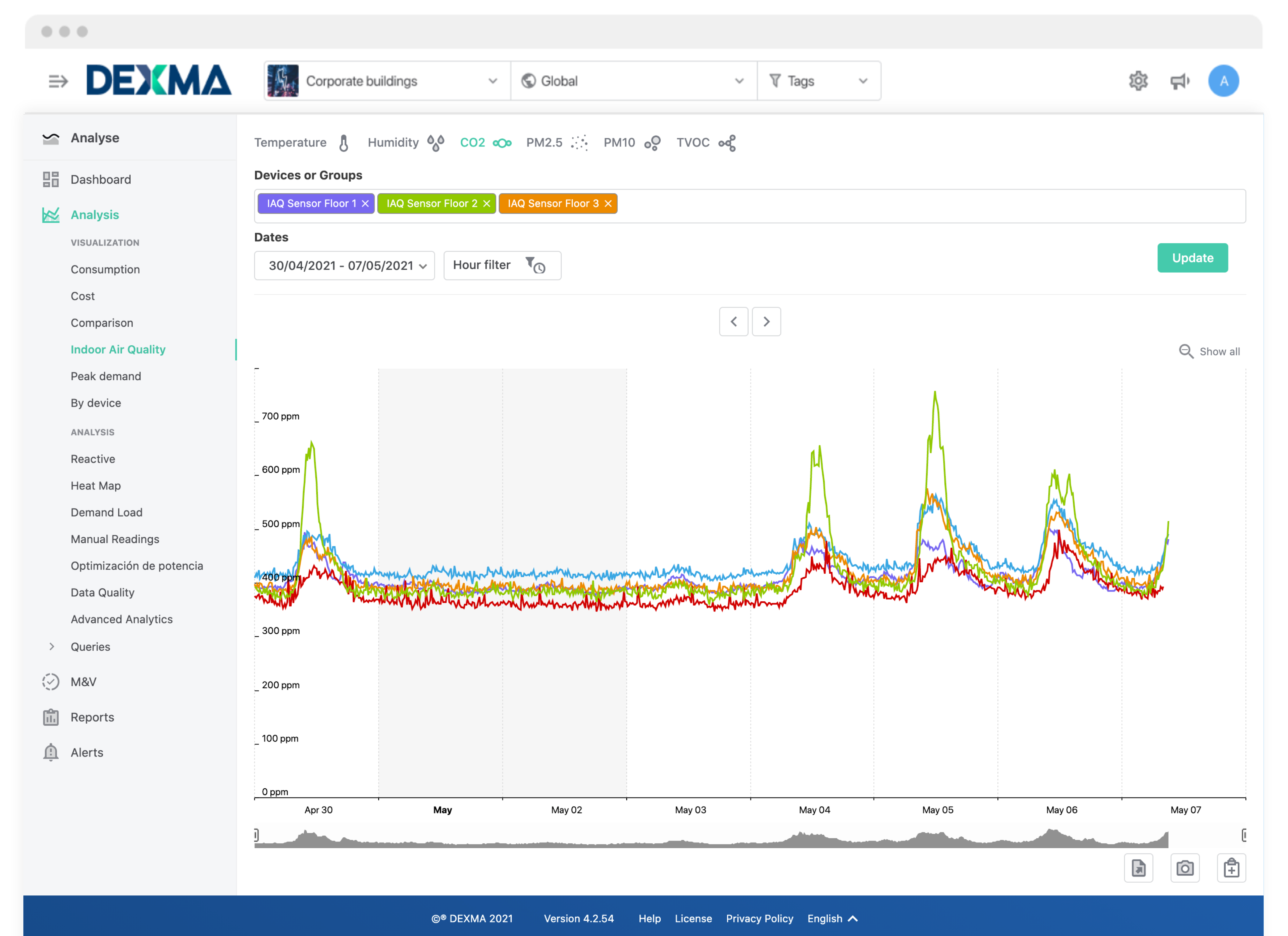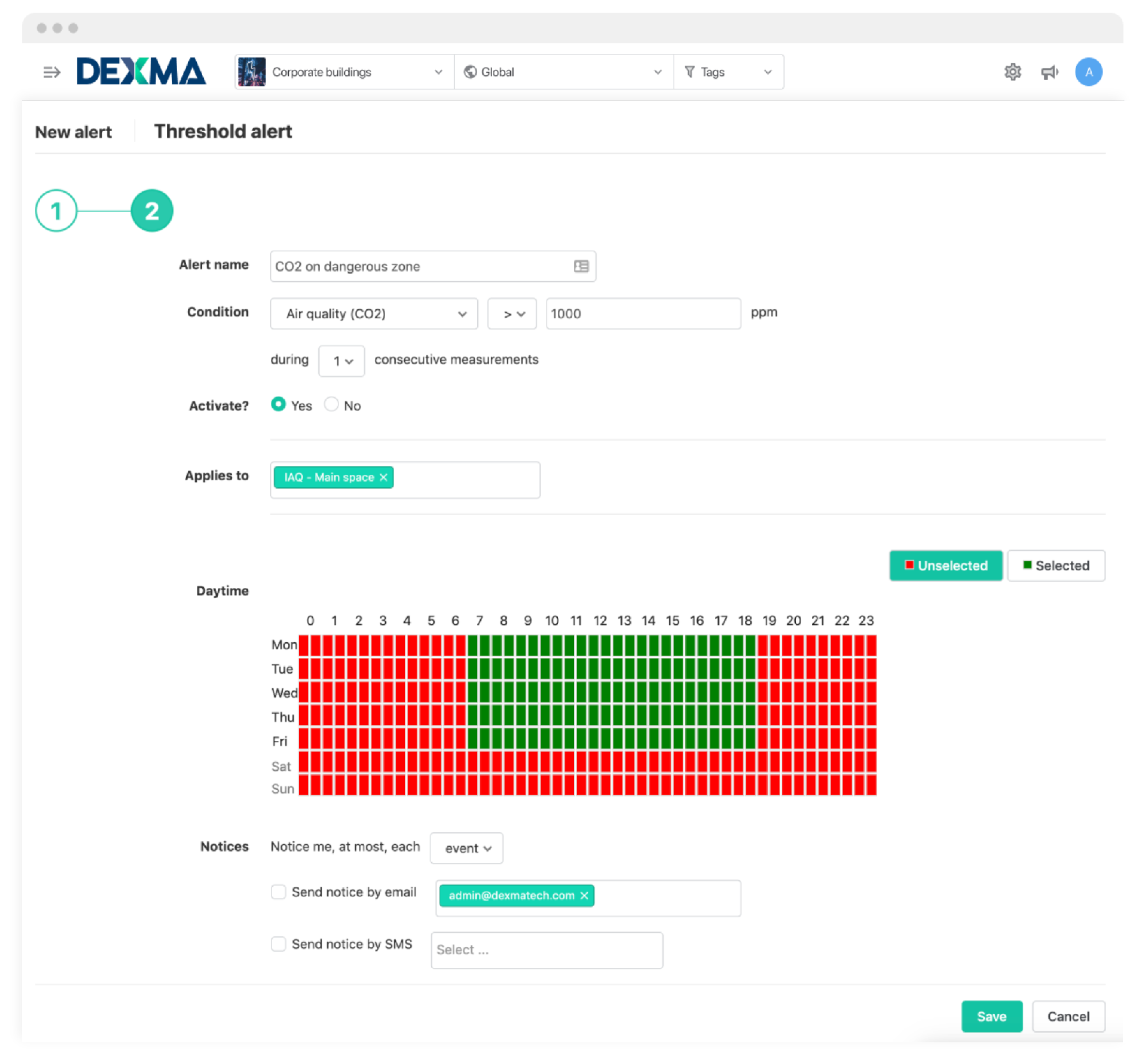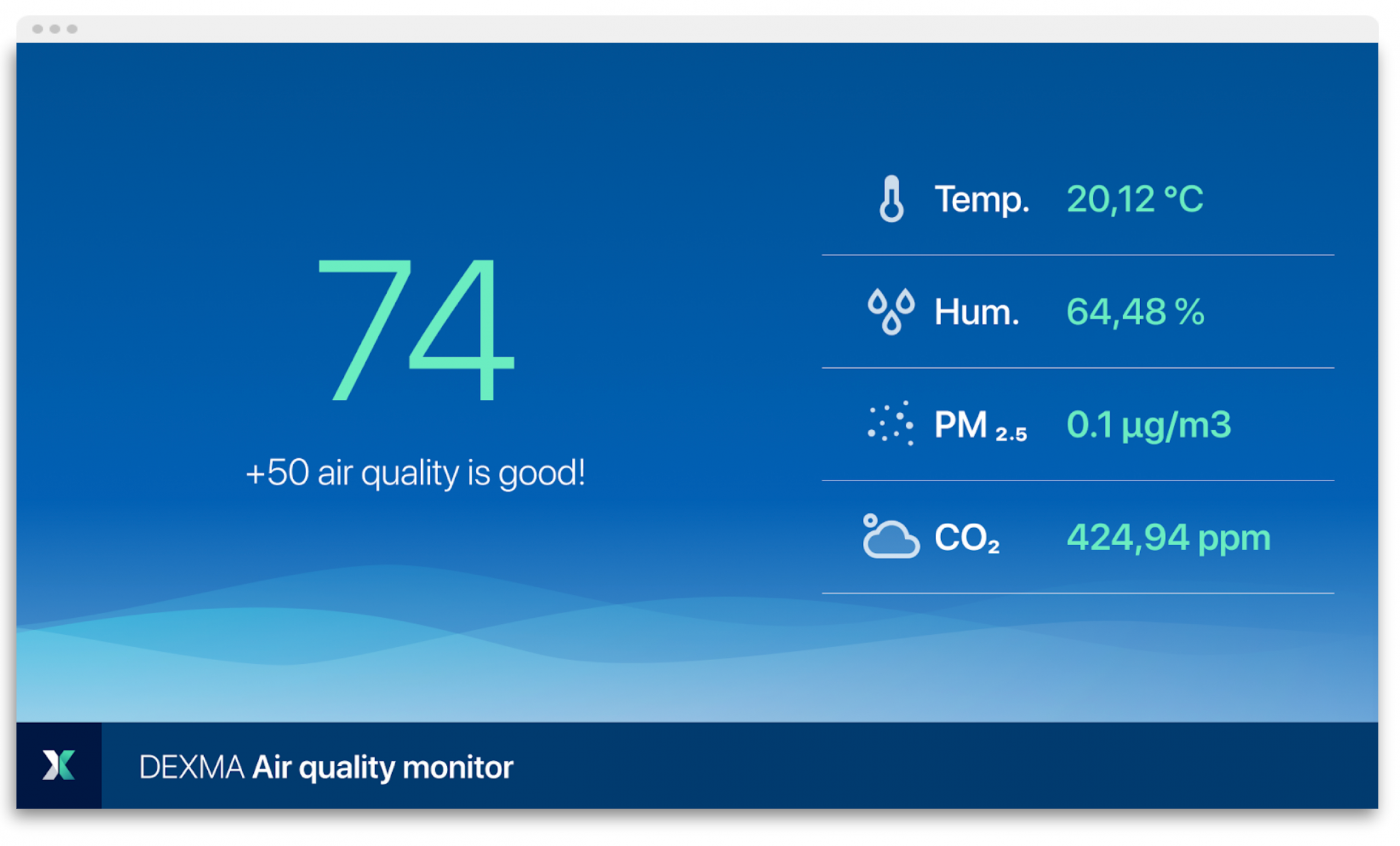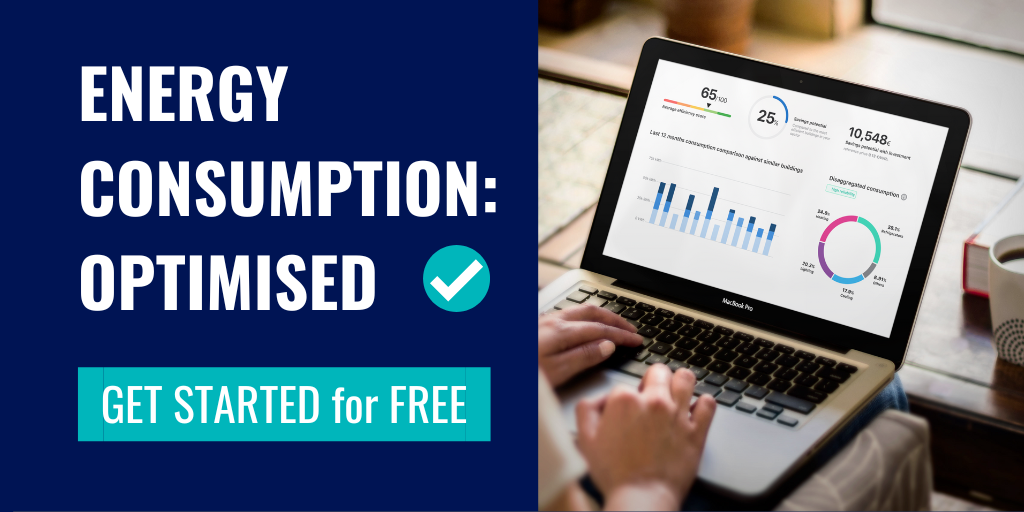Concern about indoor air quality in buildings has grown during the past year, especially now that we are gradually returning to offices, restaurants and public buildings in general. And the fact is that possible viruses in the environment are not the only factors that affect the well-being of users. Indeed, there are others, and they can be measured and controlled to improve air quality.
Find out what to look out for and how to measure indoor air quality in your buildings below:
What Is Indoor Air Quality And What Factors Influence It?
Having good indoor environmental quality in your buildings is essential, as it influences the well-being of the users who occupy them.
According to the UNE 171330:2008 standard, Indoor Environmental Quality is defined as “the environmental conditions of indoor spaces, appropriate to the user and the activity, defined by the levels of chemical and microbiological contamination and by the values of physical factors. It excludes from the scope of this definition enclosures intended for industrial and/or agricultural use”.
Within the Indoor Environmental Quality or IAQ, you should assess the Indoor Air Quality of your building.
To assess the air quality, you must take into account a series of parameters that measure different sources of pollution to which we are exposed. These parameters are mainly Carbon Dioxide (CO₂), relative humidity, indoor temperature, the famous Volatile Organic Compounds (VOCs: cleaning products, disinfectants, paints, coatings, etc.), PM2.5 and PM10 particles (dust in suspension. The number refers to the diameter in microns), and biological pollutants such as the presence of viruses, bacteria, fungi, etc.
 Why Measure The Indoor Air Quality of Your Buildings?
Why Measure The Indoor Air Quality of Your Buildings?
The fact that air pollution is a major cause of respiratory and cardiovascular diseases is nothing new…But it may surprise you to discover that a large proportion of these pollutants are absorbed indoors: on average, we spend 90% of our time inside buildings.
For example, if we refer to COVID-19, 75% of infections occur in enclosed spaces.
In addition, the pollutants found in indoor environments are the cause of user problems such as lack of concentration, reduced productivity, increased absenteeism, and even stress and depression. To illustrate, exceeding a concentration of 1,000 ppms (particles per million) of Carbon Dioxide in the workspace will cause headaches and a loss of performance.
Have you ever left a meeting with a headache? Then the most probable cause is insufficient ventilation in the room.
In fact, when more than 20% of occupants have adverse health symptoms, which disappear or subside when they leave the building, it is known as Sick Building Syndrome.
So, keeping the indoor air in your buildings clean and of high quality is essential for the health of the people who use them.
In conclusion, you should measure the indoor air quality of your buildings to be able to control its values, ensuring the comfort and health of its users, while reducing all the adverse effects mentioned above.
Let’s keep in mind that from an energy point of view, the decisions made by your energy management and maintenance team regarding the improvement of the energy efficiency of your buildings, will also bring an improvement in the Indoor Environmental Quality.
For example, in the case of infection control such as Covid-19, your company’s Facility Managers can know which areas have poor environmental conditions or a higher risk of airborne virus transmission by monitoring indoor air quality in individual rooms and spaces.
On the other hand, being able to evaluate air quality will help the energy manager and the maintenance team to detect deficient ventilation systems, which will not only be the cause of poor air quality but will also bring out systems that are not very efficient in terms of energy consumption.
Increasing the levels of air renewal leads in most cases to a surge in energy consumption, since the air that we introduce into the building must be treated to fit the needs of the building. Continuously measuring and regulating air renewal according to indoor air quality parameters will allow us to achieve the objective of maintaining excellent air quality while guaranteeing minimum energy consumption.
What does the legislation say about air quality in public buildings?
At the European level, there is legislation related to ventilation and the concentration of carbon dioxide and tobacco smoke in public buildings. However, there are no specific regulations on indoor air quality.
Almost all countries have some form of air quality legislation, but not many have specifically regulated the matter.
It is true that more and more countries are coming up with new standards in this area. In the case of the UK, for example, there is an updated air quality bill called the Ella’s Law, which would include a focus on indoor air quality. However, currently, the wording is still at draft stage.
How to Measure and Monitor the Indoor Air Quality of your Building
One of the ways to ensure that your buildings comply with environmental and indoor air quality levels is to have standards such as:
- UNE 171330-1:2008: this standard will give you the guidelines to achieve adequate indoor environmental quality in your buildings, as well as all aspects related to its audit. You will also find standardised methods for sampling, inspection and control of indoor pollutants, as well as a list of good practices.
- RESET Air: this standard defines the requirements for continuous monitoring of indoor space or building, including monitor deployment, monitor specifications, installation requirements, data reporting and data platform requirements, and calibration requirements. In addition, the standard set’s performance targets can be certified by third parties.
Ideally, you should use an indoor air quality monitoring tool that allows you to measure and monitor the different parameters over a given period. The new “Indoor Air Quality“ functionality of the Dexma Platform allows you to monitor air quality indicators.
In this case, the choice of hardware is important, as there is an increasing number of options on the market and not all of them may meet your needs.
The most important thing, as always, is that the sensors in question communicate via an open protocol so that you can visualise and analyse your data on any platform. Here is a list of the features that will determine your choice:
- Communication: Wired communication (Modbus, LonWorks, BACnet, etc) or wireless communication (WiFi, Sigfox, LoRa, Zigbee, etc).
- Power: Alkaline battery-powered, rechargeable battery-powered, battery-powered or electrically powered sensors.
- Display/Display: Sensors with display (users can view the parameters on the sensor itself) or sensors without display (only people with access to the display software can view the data). Some sensors may also have some qualitative indicators in the form of coloured LEDs.
- Variables to be measured: Until now, it was most common to find sensors on the market that measure temperature, humidity and CO₂. As mentioned above, other parameters are decisive in ensuring good air quality, such as particulate matter or volatile organic compounds.
Depending on the characteristics chosen for your project, the cost of the hardware and the cost of its installation can vary greatly. Most of all for the hardware, the factor that most influences its price would be the number of variables to be measured. Basically, the more variables the more expensive the sensor will be, while the factors that most influence the installation cost would be the communication protocol of the installed hardware and its power supply.
You can view data on temperature, humidity, CO₂, PM2.5, PM10 and TVOC. It is a very easy-to-use tool: you just have to select the devices you want to analyse, the data visualisation period, and if you need to, add a time filter such as the working hours of your office, and click.
Ta-da! You will have your visual data in a graph.
For a better understanding, below you will find 3 use cases where you will need to know air quality data.
3 Use Cases Where You Need Air Quality Data
Here are three common use cases we have seen over years:
Case 1: You want to know if you are ventilating well or not
That’s what everyone wants to ensure these days – am I ventilating enough, am I overdoing it?
Installing carbon dioxide level sensors will tell you how many particles per million (ppm) there are, at any given moment. You can deploy sensors in different places in your facility and check whether the forced ventilation equipment (climate machines) or natural ventilation (opening windows) is sufficient or not. To do well, you should be in the range of 400-800 ppm.
Once you have collected the data, you can ask the system to show you the CO2 levels for all your sensors, or just the ones on one floor, or the ones in a meeting room. You will see something like this:
It seems that during the week shown in the graph, there is no time when the 1000 ppm of Carbon Dioxide has been exceeded. However, the sensor on the second floor (sensor floor 2 – green) is the most at risk, and we will need to keep an eye on it.
Combining data such as temperature, CO₂ and relative humidity provides essential information about the safety and comfort of your buildings’ workspaces. The data also provides an indication of how to manage and reduce risk, such as increasing or changing ventilation systems or setting occupancy limits in specific rooms.
If you also add your energy consumption, you can analyse which air renewal equipment is the most efficient or detect when one of them starts to be less efficient.
Case 2: You want to know when space in your building exceeds the limit for Carbon Dioxide levels
If we have a sensor on the first floor that monitors in real-time, why not set up an alert and let you know if we exceed 1000 ppms? Well, that is exactly what we are going to do. We are going to set up an alert and, if we reach the danger zone, an email will be sent to the Facility Manager or Maintenance Manager to activate the ventilation. With Dexma it would look like this:
In addition, the matrix we see (green and red) allows you to select at what times you want the alarm to be active. We set it to go off only from 7 am to 7 pm from Monday to Friday, which is when there is an activity in the building.
Case 3: You want your users to be calm and confident that the air is healthy
We are gradually returning to our workplaces and back to socialising. The need for hygiene and well-ventilated spaces, whether in offices, restaurants, supermarkets, schools, libraries, shops, etc., is clearer than ever. We need to be sure that the spaces we enter are in the best possible condition, and it is for this reason that we can use a large screen visualisation to demonstrate that the air we breathe is clean.
This can be done, for example, by using a visualisation display at the entrance of the building, where a “score” between 0-100 is given for the air quality, and where important indoor air quality parameters are indicated. This will help you to be more transparent and will demonstrate that you are doing a great job so that people can feel safe.
As you can see, having an energy management solution that adds value to your efficient actions, such as monitoring the Indoor Air Quality of the buildings you manage, is a plus for the health of their users. If you are looking for a tool that meets all these characteristics, and many more, enter the demo and get to know it from the inside.
Editor’s note – This article has been written in collaboration with 2 of Dexma leading experts in energy management software:


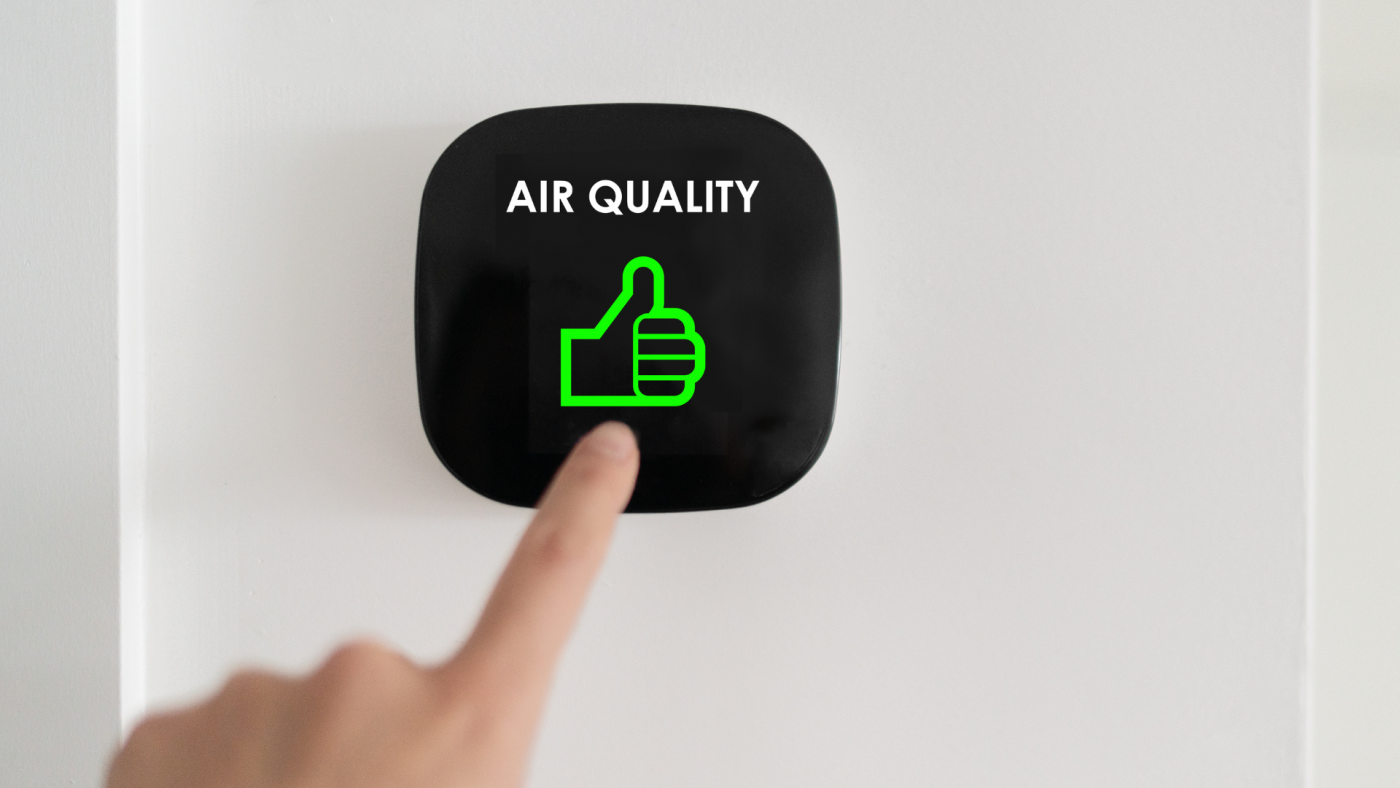

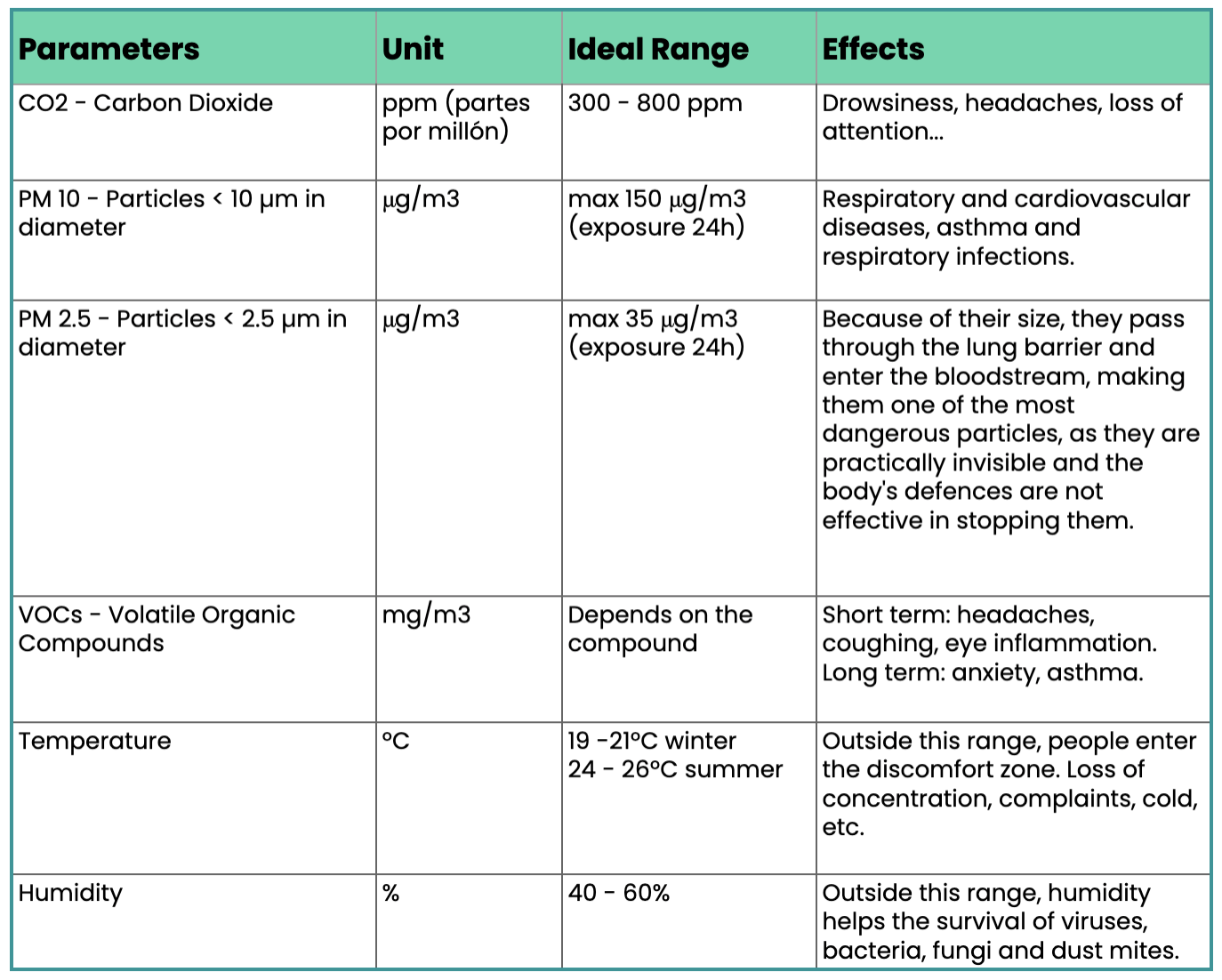 Why Measure The Indoor Air Quality of Your Buildings?
Why Measure The Indoor Air Quality of Your Buildings?